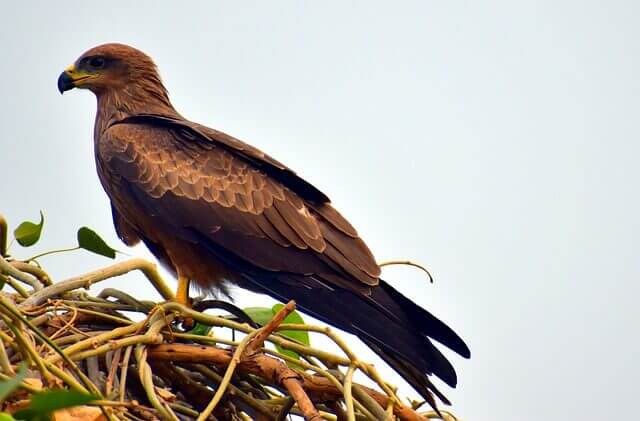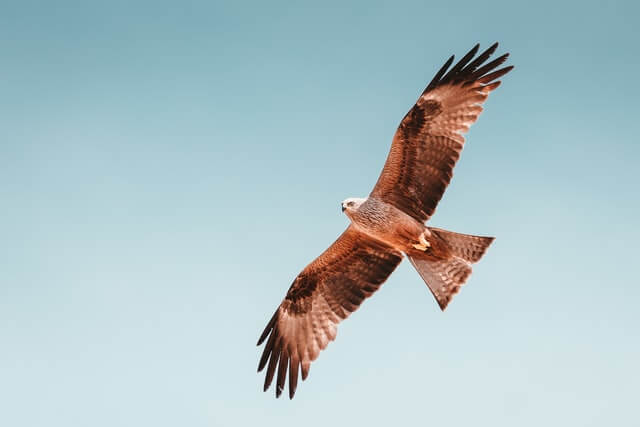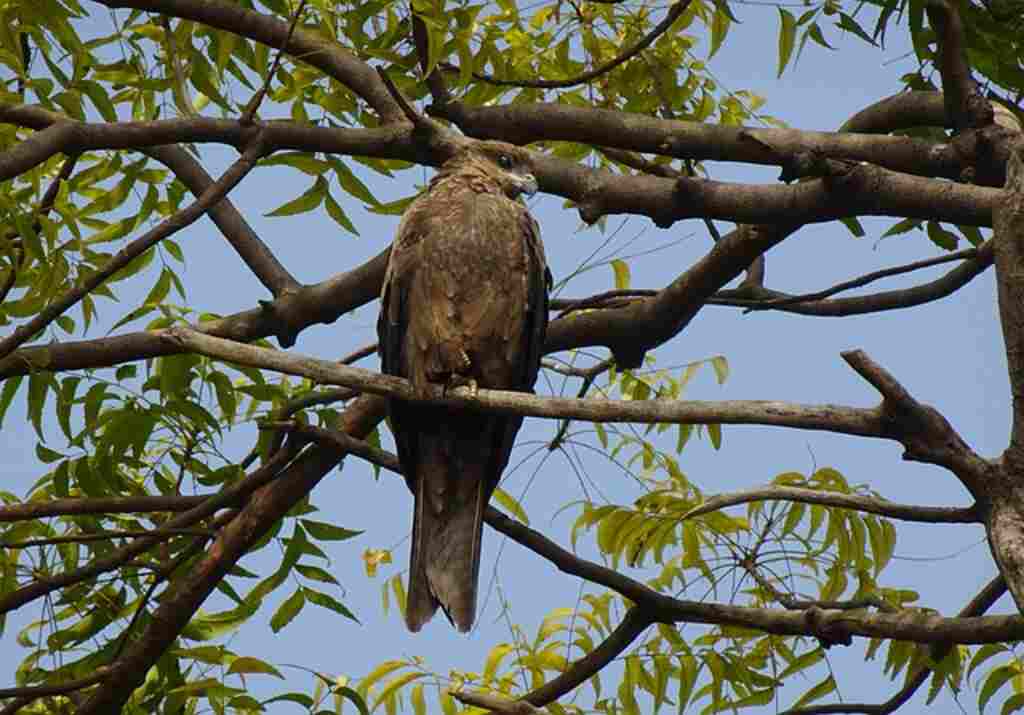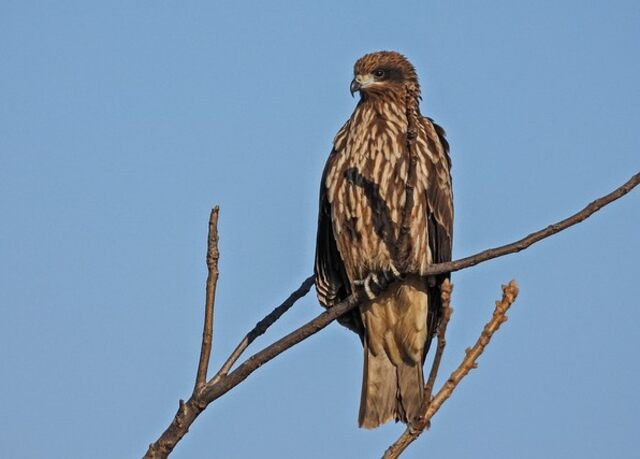In this captivating article, embark on a journey to discover 47 fun facts about black kites. With vivid photos and detailed insights, you’ll delve into the world of these captivating birds. Explore everything from their identity and habitat to their dietary preferences and intricate mating behaviors.
Table of Contents
- 1 Black Kite (Overview)
- 1.1 They live all over the world except Antarctica.
- 1.2 The Black Kite is from the genus Milvus.
- 1.3 The Black Kite has a long lifespan.
- 1.4 Chicks stay at their nest for up to 2 months.
- 1.5 They live in many habitats.
- 1.6 Black kites are mostly scavengers
- 1.7 They are a monogamous species, meaning they mate for life.
- 1.8 Black kites perform a complex aerial courtship ritual.
- 1.9 Nesting sites are made from many materials.
- 1.10 They build their nests on tree branches, cliff ledges, or buildings.
- 1.11 The male and female share responsibility for building the nest.
- 1.12 Nestling’s will begin hopping from branches within 52 days.
- 1.13 They make a “sweeping” gesture with their wings.
- 1.14 They hunt by watching the ground for movement.
- 1.15 Black kites use an unusual hunting technique.
- 1.16 Black Kites have been recorded soaring at high heights.
- 1.17 They will perch on high power lines, waiting for prey to cross.
- 1.18 The biggest populations can be found in Southern Asia.
- 1.19 A female broods once a year.
- 1.20 The Black Kite has a wide range of vocalizations.
- 1.21 Black Kites will migrate when food sources are low.
- 1.22 It uses its long tail to assist with maneuverability.
- 1.23 French sailors who kept them as pets on long sea voyages.
- 1.24 Black kites are the most widely distributed raptors in the world.
- 1.25 Black Kites can dive at a speed of nearly 100 mph.
- 1.26 The Black Kites eyesight is 4x stronger than humans.
- 2 Author
Black Kite (Overview)
| Identification | Dark brown plumage with lighter shading on head, face, neck, breast, and belly; black back and outer flight feathers with white barring; black hooked beak with yellow cere and gape; yellow legs, long black talons. |
|---|---|
| Size | Length: 19-24″ in (48.3-61.0 cm), Weight: 22.2-33.2 oz (1.4-2.1 lbs.), Wingspan: 47.2-60.6″ in (120-154 cm) |
| Taxonomy | Order: Accipitriformes, Family: Accipitridae, Subfamily: Milvinae, Genus: Milvus, Species: M. migrans, Scientific Name: Milvus migrans |
| Range | Breeds across sub-Saharan Africa from Senegal to Ethiopia; northern South America; Southern Europe (except for Greece); north-west India; Sri Lanka; Madagascar; continental Southeast Asia including Malaysia, Thailand, and Indonesia |
| Migration | Migratory, migrating to sub-Saharan Africa during winter near coastal areas or mountain ranges |
| Habitat | Heathland, marshland, moorland, plains, coastal areas, mountainsides |
| Diet | Insects, fish, lizards, frogs, snakes, small mammals, birds, carrion |
| Population | Estimated 1,000,000-2,500,000 individuals (Least Concern – Population stable) |
| Breeding Period | March-August |
| Incubation Length | 30-34 days |
| Clutch Size | 2-3 eggs |
| Number of Broods | 1 Brood |
| Nesting Habits | Nests near tall structures, constructs nests with twigs, both parents share incubation and chick-rearing responsibilities |
They live all over the world except Antarctica.
The Black Kite inhabits vast regions across the globe, with the exception of certain areas in Asia, Africa, Australia, and Antarctica.
The Black Kite is from the genus Milvus.
The Black Kite belongs to the genus Milvus, a taxonomic group found in the Old World and comprising three distinct kites, all falling within the subfamily Milvinae.
The Black Kite has a long lifespan.
The Black Kite can live up to 24 years in its natural habitat, while individuals in captivity may reach an impressive age of up to 28 years.
Chicks stay at their nest for up to 2 months.
Black Kite chicks remain in their nest for an extended period of around two months. During this time, they refrain from venturing out until they reach the necessary maturity to forage for food and sustain themselves independently.
They live in many habitats.
Black Kites thrive in a diverse range of habitats, including open landscapes dotted with trees, woodlands, mountainous regions, expansive grasslands, coastal zones, and even swampy areas.

Black kites are mostly scavengers
Black kites are mostly scavengers, but they will also take live prey when the opportunity arises. The species eats about 20% of its body weight daily, which can be as much as 0.4 pounds (0.2 kilograms) of food per day for an adult black kite.
They are a monogamous species, meaning they mate for life.
Black kites are a monogamous species, meaning they mate for life, and will stay with their partner until one of them dies. They share in parenting duties of their young, which is called “cooperative breeding.”
Both the male and female take care of the eggs, feeding them, guarding them from predators, and rearing the chicks. If one dies before the other during this process, then it’s possible for the remaining bird to either take a new mate or raise the chicks by themselves.
Black kites perform a complex aerial courtship ritual.
Black kites are one of the few species in which both sexes perform a complex aerial courtship ritual. They will use loud squawking, tussling with their talons, and tumbling in the air to display themselves to potential mates.
The females can be choosy about whom they mate with because they often need to find an alpha male so that their chicks will have good genes for survival. This means males must put on an impressive show to get them interested.
Nesting sites are made from many materials.
Nesting sites are usually made from sticks and twigs, but sometimes these nests may also contain pieces of cloth or plastic for lining (which could come from things like water bottles).
They build their nests on tree branches, cliff ledges, or buildings.
Black kites are one of the few birds that will build their nests on tree branches, cliff ledges, or buildings. They may reuse the same nest for years to come. It has been noted that most nesting sites are not high up in trees but instead on lower limbs where it is easier to see predators coming and have better access to prey items.

The male and female share responsibility for building the nest. The male bird is generally responsible for bringing material to build the nest, with the female only joining in.
The female does most of the incubation, but both parents take turns to provide warmth by sitting on top of their eggs or chicks. When it comes time to feed their young, both parents feed them, but they have different roles – one feeds and the other guards.
Nestling’s will begin hopping from branches within 52 days.
Black Kite nestlings experience remarkable growth milestones. Their feathers start to emerge within a span of 18-22 days after hatching, marking the beginning of their plumage development. Around the 16-20 day mark, these young birds take their first steps, standing up in the nest.
As they approach 25-32 days, they enthusiastically begin to flap their wings, practicing essential flight skills. By the time they reach approximately 52 days of age, they exhibit increased mobility, often hopping from branch to branch near their nest, a significant step toward independence.
They make a “sweeping” gesture with their wings.
They make a “sweeping” gesture with their wings when they descend to earth in anticipation of prey.
They hunt by watching the ground for movement.
They hunt by watching the ground for movement and then dive feet first, sometimes from quite high altitudes. When they see their prey, they will swoop down in a dive to catch it in their talons.
Black kites use an unusual hunting technique.
Black kites use an unusual technique to hunt their prey: they often drop on the prey’s back and then pull it up towards them, a strategy used by other birds of prey such as the Harris Hawk or Steppe Eagle.
Black Kites have been recorded soaring at high heights.
Black Kites have been recorded soaring at heights up to 800 meters above sea-level. Kites are a species of hawk that has been known to spend time in the air as high as 2600 feet (0.8 kilometers) and as low as 100 feet (30 meters).

They will perch on high power lines, waiting for prey to cross.
Black kites usually perch on high power lines or trees waiting for prey to cross below them so they can swoop down and capture it with their claws.
The biggest populations can be found in Southern Asia.
The Black Kite is the most common species of kite found in Asia. The biggest populations are found throughout most of southern Asia (from the foothills of the Himalayas all the way down to India).
A female broods once a year.
A female broods once a year, of two to three white eggs with dark brown speckles. Incubation is carried out by both parents and takes around thirty days. The chicks are fed mainly on insects and small lizards for the first few weeks of their lives, before they begin to eat scraps from their parents’ catches.
The Black Kite has a wide range of vocalizations.
The Black Kite is a bird with a wide range of vocalizations. They have screeches, cackles, clicks and simple “cries”. These sounds are mainly used to scare other animals away from their territory or for communicating.
Black Kites will migrate when food sources are low.
Every year, black kites migrate from northern and Central Europe to Southern Africa. As climate change shifts the population of food sources, they must find new ways to survive.
It uses its long tail to assist with maneuverability.
The black kite is a migratory bird of prey, and uses its long tail to assist with maneuverability while soaring and gliding during migration. The tail feathers provide a stabilizing effect on the bird, which allows it to make sharp turns and shifts in flight direction without using much energy.
Migrating birds will often flap their wings when they need to gain altitude or slow down in flight, but the black kite does not use this method for flying. Instead, it uses updrafts from thermals created by ground heat.

French sailors who kept them as pets on long sea voyages.
The introduction of black kites to Western Europe traces back to the late 18th century when French sailors, fascinated by these birds, began bringing them as companions during extended sea voyages, thereby familiarizing the region with these remarkable avian travelers.
Black kites are the most widely distributed raptors in the world.
Black kites are one of the most widely distributed raptors in the world. They can be found on every continent except Antarctica, and they live in nearly all types of habitats, from tundra to deserts.
Black Kites can dive at a speed of nearly 100 mph.
The black kite is a bird of prey in the genus Milvus, and it has been recorded to dive at speeds up to 99.3 miles per hour (160 kilometers per hour). This amazing speed can be achieved by the black kite when attacking its prey
The Black Kites eyesight is 4x stronger than humans.
Enhancing the description of Black Kites’ eyesight:
“Black Kites possess extraordinary vision, approximately four times more powerful than that of humans. With this exceptional visual acuity, they can spot potential prey from great distances, often spanning several kilometers. When they detect food in their sights, these raptors swiftly descend, utilizing their razor-sharp talons to secure their meal.”




